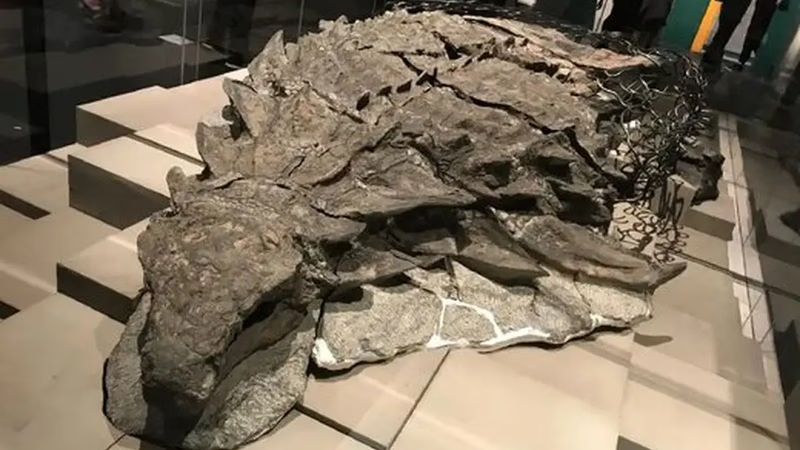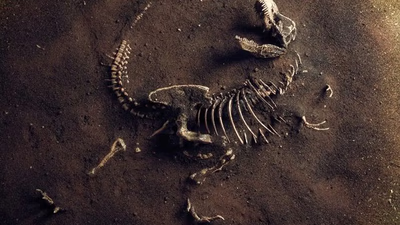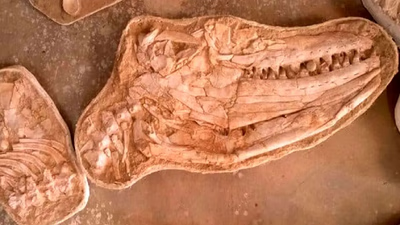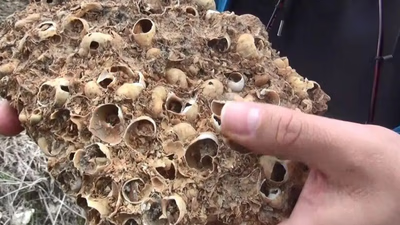
Fossil rocks from the Middle East showcase diverse geological history.
Among the countries of the Middle East and West Asia, the rate at which fossil rocks are found is related to various factors, including geology, geographic history, and the nature of the rocks. In this area, the rate of finding fossil rocks may vary from region to region. Various examples of fossil rocks have also been found in many other regions of the Middle East, including ammonites, bivalveites, trilobites, schinites, orconites, and coalstones. Of course, the type and variety of fossil rocks depends on the geological and geochemical conditions of the region.
Due to its geography and special geological history, Iran has areas where fossil rocks are found in significant quantities. Some important regions include Khuzestan, Kerman, Baluchistan and Alborz. These regions have high geographical and geochemical diversity, which provides suitable conditions for the formation and preservation of fossil rocks. Fossil rocks in southern Iran include ammonite, bivialite, scenite, orconite and coal rocks . In Kerman province, including in Kharong and Shahrbabak region, many fossil rocks including bivyalite, ammonite, trilobite, orconite and scenite have been found.
Saudi Arabia is also one of the countries where fossil stones exist in a significant amount. Areas such as Jabal al-Louz and the Persian Gulf and the Hael region in the middle of Arabia have witnessed important finds of fossil rocks. In Saudi Arabia, fossil rocks including ammonites, trilobites, bivialites and coal rocks are found. The Jabal al-Louz region in the Persian Gulf and the Hael region in the middle of Arabia have witnessed important finds of fossil rocks.
Turkey is also one of the countries where fossil stones are found in large quantities. The geographical and geochemical diversity of Turkey, together with the effects of climate and geographical changes over time, have provided suitable conditions for the formation and recording of fossil rocks. In Turkey, fossil rocks include ammonite, breccia, trilobite, bivalite and coal rocks. The Anatolian region in Turkey has witnessed important finds of fossil rocks such as ammonite, trilobite, and bivalite.
Geological and geochemical conditions in some areas may not be suitable. Some regions of the Middle East include deserts, deserts, and special rock cover where fossil rocks are less preserved. Geological processes such as pressure, heat, and changes in the earth's surface over time can lead to the destruction of fossil rocks or minor changes in them. In some areas, these processes can cause a shortage of fossil rocks.
Geographical changes such as mountain elevation, erosion of rock masses and changes in climate can reduce the effects of access and preservation of fossil rocks. Cultural and economic factors can have an effect on the exploration and study of fossil rocks. Countries that are actively engaged in geological and paleontological research and allocate sufficient resources for this purpose are more likely to find fossil rocks. A combination of these factors causes less fossil stones to be found in some countries of the Middle East. Of course, it should be noted that these differences have the ability to change and vary and fossil rocks may be found in some areas of the Middle East.
-

Fossils can hold significant economic value, but their worth often varies based on several factors. The type and quality of a fossil are crucial in determining its price; well-preserved specimens with intricate details command higher prices. Size also plays a role, as larger fossils are typically rarer and more sought after. Rarity is a key factor; unique fossils attract collectors and institutions, driving up their market value. Legal regulations surrounding fossil extraction and trade can influence pricing across different regions. Notable examples of valuable fossils include amber specimens containing ancient insects, the famous Sue dinosaur fossil, and the Guinness Gold Leaf fossil leaves used in art. Demand and supply dynamics further affect pricing; high demand coupled with low supply usually results in increased prices. Fossils can be traded in virtual markets where auction dynamics come into play.
Beyond economic value, many fossils possess scientific significance, aiding research into Earth"s history and evolution. Some serve as cultural artifacts or symbols within museums, while others represent mineral resources like oil or coal. Overall, the pricing of fossils is complex and influenced by various market factors. "
-

Selling fossils internationally requires careful consideration of legal regulations and market dynamics. Sellers should seek reliable buyers and utilize written contracts to ensure clarity in transactions. Fossils can be sold through various channels, including fairs, auctions, and online platforms. Compliance with local laws regarding fossil protection is crucial during export. To establish authenticity, consulting paleontologists or experts is recommended, as they can provide necessary evaluations and certificates of authenticity. For instance, a farmer in Turkey looking to sell a fossil to a buyer in Germany must first assess the fossil"s value with expert help. Researching potential buyers and setting a competitive price based on market trends is essential. Communication with the buyer should be clear, covering details about the fossil and transaction terms.
Payment methods must ensure security, while transportation arrangements must comply with regulations to avoid legal issues. Buyers should also conduct due diligence by verifying the seller"s credibility and requesting documentation that proves the fossil"s authenticity. This includes checking the seller"s history and possibly visiting their location for assurance. Overall, both parties must prioritize transparency and legality throughout the transaction process.
-

Fossil rock discovery in the Middle East and West Asia varies significantly due to geological, geographic, and historical factors. Regions like Iran, Saudi Arabia, and Turkey showcase diverse fossil types influenced by their unique geochemical conditions. In Iran, notable areas such as Khuzestan and Kerman yield fossils like ammonites and trilobites. Saudi Arabia"s Jabal al-Louz and Hael regions also reveal significant fossil finds, including bivalites and coal rocks. Turkey"s Anatolian region is rich in fossil diversity, with similar finds of ammonites and trilobites. However, some areas face challenges in fossil preservation due to geological processes like erosion and climate changes. Cultural and economic factors also play a role; countries investing in geological research are more likely to discover fossils. Overall, while certain regions are prolific in fossil findings, others may experience scarcity due to a combination of environmental conditions and resource allocation.
-

Fossil trade in international markets is influenced by various factors, including demand driven by interests in natural history, paleontology, and home decor. The appeal of specific fossils, such as dinosaurs, significantly impacts collector interest. Knowledge of paleontology is crucial for fossil dealers, who must understand fossil types, extraction methods, and preservation techniques. Research skills are essential for analyzing market trends and pricing while being aware of competition and potential buyers. Financial management is also vital for tracking expenses and income effectively. Each country has distinct regulations governing fossil trade, necessitating familiarity with export and import laws to avoid legal issues. Building a strong network within the fossil industry enhances opportunities for traders to connect with paleontologists and customers. Identifying genuine fossils from fakes is critical; thus, traders must be adept at evaluating authenticity.
Proper preservation techniques are necessary to maintain the quality of fossils for display and sale. Additionally, traders should be skilled in pricing based on historical significance and market value while recognizing high-quality specimens during procurement.




